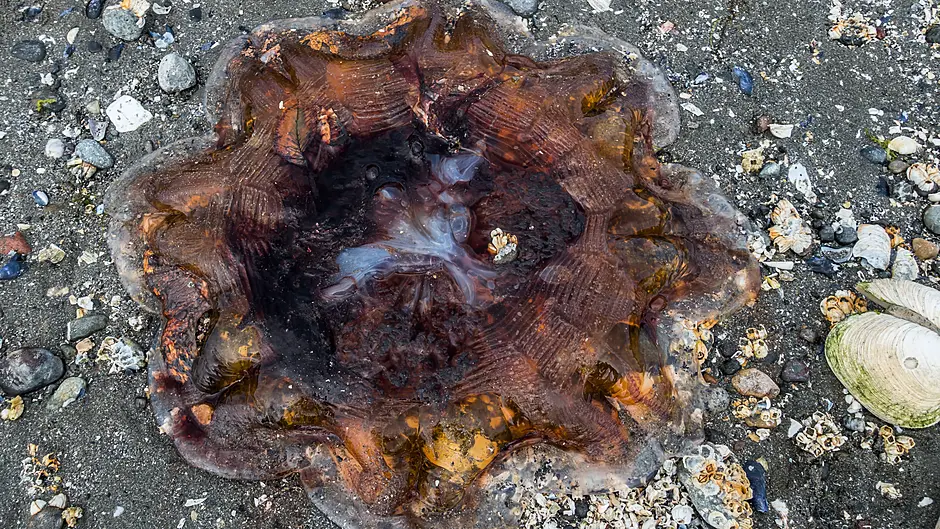BY BRIAN MOORE
WEST Cork swimmers and beach goers are being cautioned to look out for one of the most dangerous jellyfish that has caused several injuries around the Irish coast this summer.
A huge Lion’s Mane jellyfish was discovered washed up on Inchydoney Beach recently, an encounter that lead to the closure of the very popular beach to swimmers.
With tentacles that can stretch up to 10ft behind the jellyfish, just one string from the Lion’s Mane can cause symptoms like nausea, excessive sweating and cramping.
It is possible for some people to experience an allergic reaction to the stings and in such cases symptoms are often far more severe. Stings can also result in symptoms including back pain, nausea, abdominal cramps, sweating and hypertension.
Lion’s Manes are typically seen from May to October and their numbers appear to be on the rise.
‘It’s not uncommon for them to be spotted, there are a lot more people in the water these days and they are being spotted more frequently around the coast,’ Rodger Sweeney, deputy CEO at Water Safety Ireland said.
According to the HSE, the Lion’s Mane is ‘the most serious’ jellyfish to be found around Ireland’s coastline.
Normally, when jellyfish wash up on beaches they are buried in the sand by the lifeguard on duty. However, parents and pet owners are warned to stay away from any Lion’s Mane jellyfish that has been washed up on a beach.
‘Sometimes children are curious on the beach and they will end up messing or touching them to see what they are like, and they can still sting when they are out of the water,’ Rodger Sweeney said.
If you’re stung by one of these jellyfish, the expert advice is to alert the nearest lifeguard as they will often carry jellyfish sting kits that can help remove any remaining tentacles.









